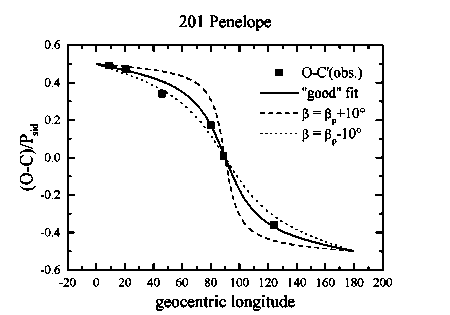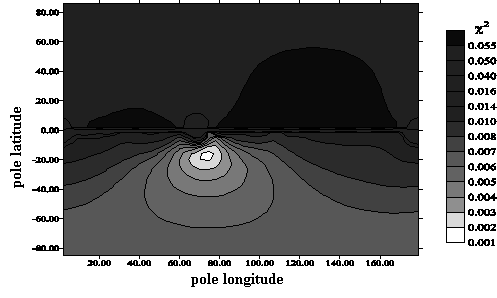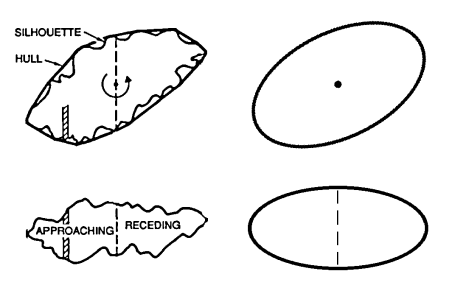
Here we present some results of higher interest, but without
detailed descriptions.
The main aim of our modellings is to derive the accurate
pole coordinates of minor planets. Therefore we applied the widely used
astronomical tool named O-C diagram onto solar system bodies (we call the
new diagram O-C'), and the fall of it has been calculated. After deriving
the observed O-C' points from the measured light extrema, with a
2-dimensional fit of the theoretical O-C the pole can be calculated.
Here we present an example where the points of 201 Penelope are fitted.
The good fit is signed by the solid line; while the "bad" fits represent
rotational axes in 10 degrees difference.

The result of a 2-dimensional fit shows the accurate position of the
pole (the white region). Darker colours show axes in worse correlation
of the observed O-C' points. It has to be remarked that the upper region
means prograde rotation, which has been showed out to be hardly possible.
The O-C' tool works the best in examining the sense of rotation.

The shape of the asteroids can be also modelled. In few cases, the modelled shapes, mainly triaxial ellipsoids, can be compared with radar observations. Below we show the agreement between the main parameters in the case of 1627 Ivar. The radar image (Ostro et al. 1990, Astronomical Journal) is placed on the left side, while our model is shown on the right. Certainly, the local irregularities cannot be calculated from Earth-based observations, but in the main characterisation the two results are equivalent.
